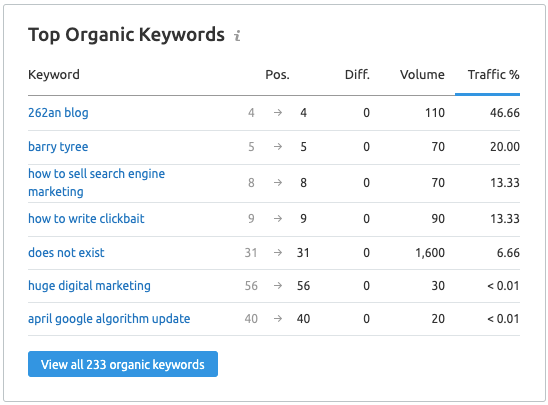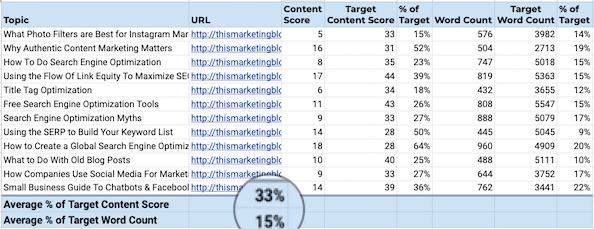Why AI Generated Content Won’t Break The Web
In 2019, major publications ran with a story about how content created with artificial intelligence was going to bring down the web. It was the ultimate doomsday scenario that had many wondering whether this was indeed the end of days.
“Endless AI-generated spam risks clogging up Google’s search results” TheVerge
“Agency’s Fake Blog Shows How AI-Generated Content Could Spam the Web to Death” ADWEEK
“AI-generated fake content could unleash a virtual arms race” VentureBeat
The story, based on a site consisting of hundreds of pages of AI-generated content was titillating. The results one year later are anything but.
The premise was this, “The blog’s 600 pages required 20 minutes to generate resulting in nearly 300 hundred ranking terms, over 200 unique linking domains, and monthly organic traffic of approximately 60 visits.”
Imagine what those metrics could look like, were you to 10x or 100x the amount of content? Why stop there? Ad Infinitum, you could soon dominate Search!
Or so the thinking went.
The results would beg to differ, so let’s take a look, shall we?

Traffic Trend
The PR coverage in the latter half of 2019 did little for the site traffic-wise. So we can make the assumption that the pick-up in traffic seen on the chart is due to organic traffic increasing. Keep in mind this chart is only an estimate and the actual figures are undoubtedly higher.

How much higher? Probably nothing to write home about.
Organic Keywords Trend
Keyword rankings follow a similar trend in their rise and fall compared to traffic. Like a one-hit-wonder, this site is on the yellow brick road to obscurity. Its brief 15-minutes of fame is just a memory.

Organic Keywords
Not that this site was ever much of a contender for anything. Look at the top organic keywords for the site.

“Does not exist.” Who wants to rank for that?
If your name is Barry Tyree (yes he’s real), you might be amused to find out you’re not human.

But that’s about it.
Content marketers are unlikely to encounter this blog unless you’re one of the 110 people a month that searches for “262an blog” but let’s not go there.
The top five keywords account for 99.99% of all traffic to this site. This list of keywords doesn’t reveal a story about this site’s expertise, because there is none. That’s the big take-away here.
Referring Domains
Not surprisingly, this graph shows the rise in referring domains as the press picked up on the story in the latter half of 2019. Those links didn’t translate into traffic or meaningful search engine rankings though. That’s something to keep in mind next time you embark on a link building campaign.

Nearly all the links target the home page with very few going to individual articles. Maybe it’s because they’re not that good.
Content Quality
Running a sample of the site’s articles through MarketMuse validates my suspicion. The articles (generated using GROVER) are lacking in substance as reflected in both the Content Score and Word Count. On average, the posts achieve just 33% of the Target Content Score. Attaining that score is tough when the articles are short, at just 15% of the Target Word Count.

It’s not surprising that the articles are short, on average they’re 673 words. Most natural language generation models struggle to produce long-form content that’s coherent. One thousand words and you’re pushing it, with most becoming muddled after just a few hundred.
This is Not The Way to Use AI Content
While the site was an interesting experiment that garnered its fair share of PR, this simply isn’t the way to use artificial intelligence for generating content.
We’ve found that when it comes to natural language generation, humans play a vital part in ensuring an acceptable outcome. Humans require direction and so does AI.

You wouldn’t give a writer just the title for an assignment and expect stellar results. Why would you expect something different from AI? There are limits to machine learning after all.
What you should do now
When you’re ready… here are 3 ways we can help you publish better content, faster:
- Book time with MarketMuse Schedule a live demo with one of our strategists to see how MarketMuse can help your team reach their content goals.
- If you’d like to learn how to create better content faster, visit our blog. It’s full of resources to help scale content.
- If you know another marketer who’d enjoy reading this page, share it with them via email, LinkedIn, Twitter, or Facebook.
Stephen leads the content strategy blog for MarketMuse, an AI-powered Content Intelligence and Strategy Platform. You can connect with him on social or his personal blog.